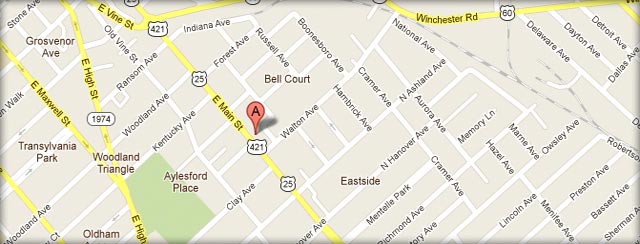- ATV accidents
- Brain Injuries
- Bus Accident
- Car Accidents
- Construction Accident
- Distracted Driving
- Drugged Driving Accident
- DUI
- Firm News
- Mass Tort
- Medical Malpractice
- Motorcycle Accidents
- Pedestrian Accidents
- Personal Injury
- Product Liability
- Safety
- Social Security Disability
- Truck Accidents
- Vehicle Accidents
- Workers Compensation
- Workplace Injuries
A Kentucky school bus crash earlier this month has resulted in various minor injuries to many of the 16 elementary school students on a field trip to Mammoth Cave. The accident, caused by a tractor-trailer bumping the front fender of the bus, sent the bus flipping over an embankment. Fortunately, no serious injuries were reported and the bus driver, who was not at fault in the accident, will keep his job.
In another school bus accident near Bardwell, KY in May of this year, passengers were not as fortunate.One boy died, two adults were airlifted to a nearby hospital, and 16 others were injured when their bus overturned.The students were returning from a field trip where they were rewarded with a day of swimming and games for reaching their reading goals.
According to the National Highway Traffic Safety Administration (NHTSA), since 2000, 1,386 people have died in school bus-related crashes, or an average of 139 fatalities per year. Yet, the NHTSA found that students are about 50 times more likely to arrive at school alive if they take the bus than if they drive themselves or ride with friends. The NHTSA touts the safety of school buses stating, “Today’s school buses are built with safety in mind. They are tougher, cleaner and more diligently maintained than ever before.”
In light of these recent school bus accidents, however, some are wondering whether safety belts on Kentucky school buses will limit injuries and death in future accidents.The National Coalition for School Bus Safety is one organization that has been pushing for seatbelts in school buses for years.The Coalition believes that the child restraint laws that apply to passenger vehicles should also apply to school buses.
Opponents argue that seatbelts are costly, are more harmful to small children than no seatbelt and that the high-back padded seats (compartmentalization) provide sufficient protection. The National Transportation Safety Board (NTSB) does not recommend seat belts on school buses and claims the compartmentalization of buses is sufficient for students’ safety. California, Florida, Louisiana, New Jersey, New York, and Texas are currently the only states that require large school buses to have seat belts.
One advocate of seatbelts in school buses is Dr. Gary Smith, director of The Center for Injury Research and Policy at Columbus Children’s Hospital. The Center conducted a study in 2007 that analyzed school bus accidents between 2001 and 2003. Smith said, “It doesn’t matter whether you are in a school bus or whether you’re in a family car, the laws of physics apply the same to the child. If you are not restrained, you will go flying, and that can result in a very serious injury.”
The Kentucky Department of Education, Pupil Transportation Branch published a position paper on the requirement of safety belts on large school buses.The board supports the NTSB and stated “that there is no supportable need for safety belts on large school buses. With the limited resources available to our education system, we must allocate those resources where they will provide the maximum benefit to our children.”
Kentucky requires buses designed to carry nine or fewer passengers to have a safety restraint in place for each passenger.
Frank Jenkins Law Office supports any efforts aimed at improving the safety of our students while traveling on public school buses. Our Kentucky vehicle accident attorneys also encourage all drivers to be alert when traveling around school buses to ensure everyone gets to their destinations safely.

